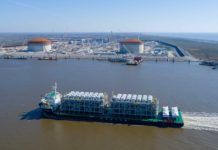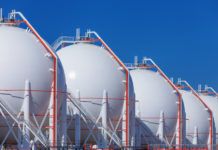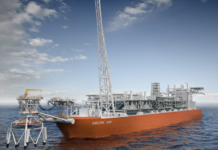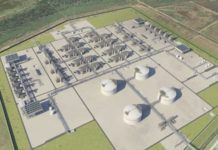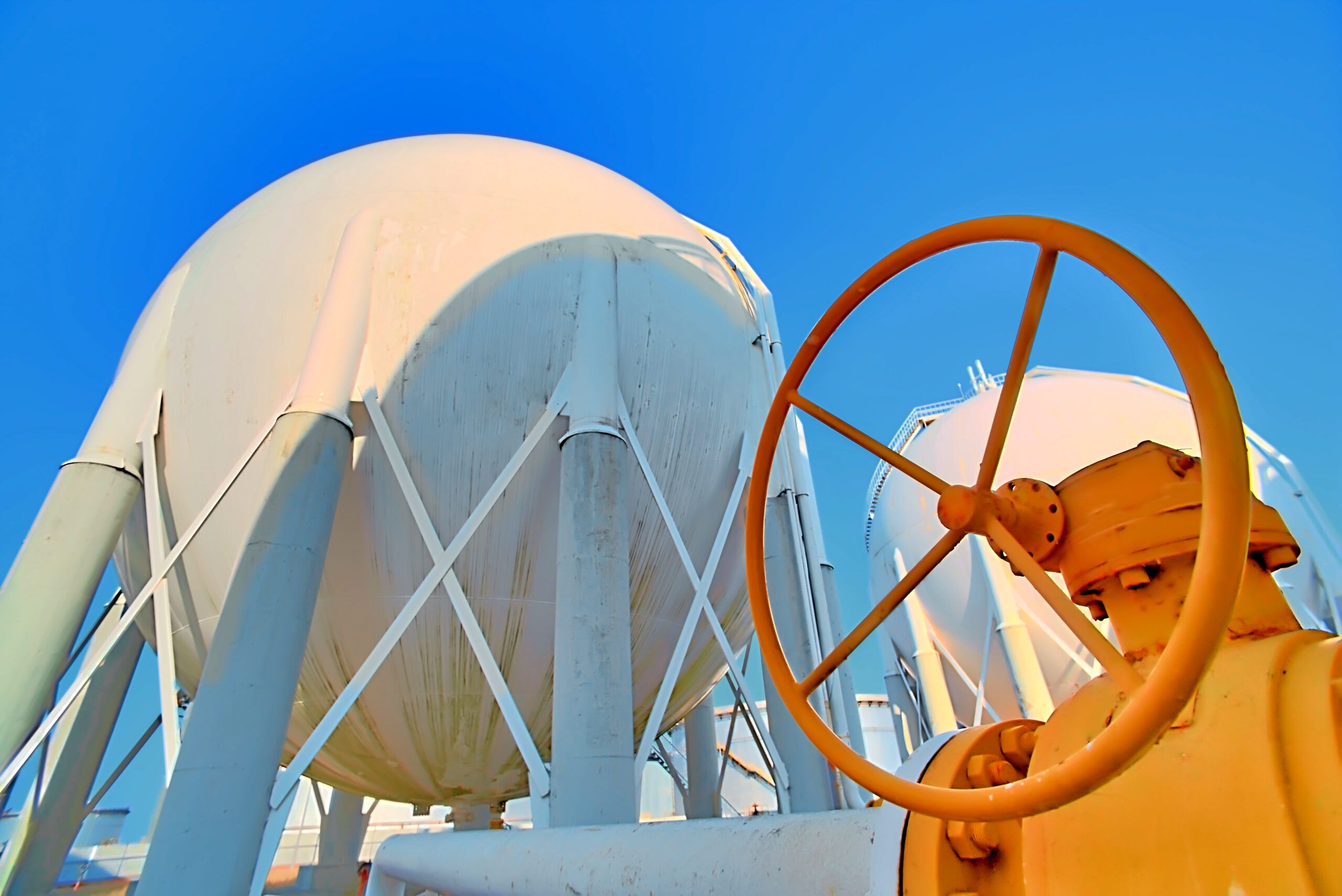
Irrespective of the current LNG permitting pause, existing demand and a readily available supply are fueling the construction of thousands of miles of new natural gas pipelines from the Haynesville and Permian shale plays.
As many as eight pipeline projects continue to advance across Texas and Louisiana to feed five LNG export projects currently under construction along the Gulf Coast, according to the most recent data provided by the U.S. Energy Information Administration’s Natural Gas Pipeline Project Tracker.
That equates to more than 20 billion cubic feet per day of new capacity to feed liquefaction trains coming online through the end of the decade.
And there’s no sign that things are slowing down. Gordon Gorrie, vice president of oil and gas research at Industrial Info Resources in Houston, is currently tracking 155 projects totaling $22 billion in natural gas pipelines and compressor stations across the two states that are either planned, designed or under construction.
Gorrie, who monitors oil and gas investment worldwide, says most of the pipelines are making a beeline for the Gulf Coast to serve LNG facilities in Texas and Louisiana.

“The vast majority in Louisiana are coming out of the Haynesville Shale play, but the Permian Basin has opened up a bit too,” Gorrie says. “Those come down to the Houston area and go from there across to Louisiana.
“And when a project is announced in Texas or Louisiana, there’s a good chance that it will move forward,” he adds. “The citizens of those two states are generally favorable toward putting in new pipelines, unlike in the northeast and other places.”
Market dynamics favor a robust pipeline market in the long term, says Greg Upton, executive director of LSU’s Center for Energy Studies in Baton Rouge. That’s because U.S. oil and gas production is expected to grow for decades.
“Globally, it’s going to be driven by the developing world,” Upton says. “If we’re going to connect production all over the U.S. with markets all over the world, midstream assets are going to be part of that connection. So as long as those longer trends persist, there are going to be investments in these midstream assets to get product down to the Gulf Coast.”
Fighting Among Ourselves
The race to get natural gas from the Haynesville Shale to the southwest Louisiana LNG market has created an intensely competitive market as companies such as Energy Transfer, DT Midstream, Williams Cos. and New Generation Gas Gathering (NG3) battle for the same land space.
“Much of the time, these disputes are about territory rights,” says Eric Smith, director of the Tulane Energy Institute. “A pipeline is essentially a business that moves product from point A to point B, and if two companies are drawing on the same field or supplying the same terminal, there has to be some sort of agreement as to how that can be done in an orderly manner. Otherwise, they’re going to fight tooth and nail.”
Case in point: After months of legal wranglings, Williams Cos. received the legal green light in late July to continue building its 1.8 billion-cubic-feet-per-day Louisiana Energy Gateway, or LEG, project, a natural gas pipeline that will fuel LNG export terminals with Haynesville Shale gas. That’s after a court threw out an Energy Transfer attempt to halt construction.

The two companies had been in a dispute in which Energy Transfer contested having the LEG line cross under its pipeline in DeSoto and Sabine parishes. Ultimately, the 42nd Judicial District Court in DeSoto Parish ruled that Energy Transfer could not block Williams from constructing the pipeline. “Construction can begin in earnest on the Louisiana Energy Gateway, which is expected to be in service by the second half of 2025,” a Williams spokesperson said in a written statement.
LEG was just the latest project to overcome Energy Transfer’s crossing objections. DTM found an alternative route for its Louisiana Energy Access Project after a court ruled against it last year. And Momentum Midstream recently settled its crossing dispute to move forward with the 1.7 bcf/d New Generation Gas Gathering LLC pipeline.
Fighting Regulations
But the long-term threat to pipeline development isn’t legal infighting.
It’s the external roadblocks thrown up by the federal government and courts, Upton says. In particular, the current LNG export facility permitting pause could have significant impacts on pipeline development for years.
“When an LNG facility owner signs a long-term contract to export gas produced on the Gulf Coast, they must line up every single part of that supply chain,” he notes. “You need to have the producer to produce the gas and the midstream assets to get it to the Gulf Coast … so when you throw in uncertainty over permitting, it has a ripple effect on everything because all these assets must come online at the right time.”
Tulane’s Smith says environmental groups and the Federal Energy Regulatory Commission, or FERC, seem determined to disrupt new or expanded LNG export capability. “Our best chances are with intrastate pipelines that remain within Louisiana, which don’t require FERC approval,” Smith says. “But, even in that case, NEPA (National Environmental Policy Act) interpretations provide plenty of room for activists to meaningfully delay projects.”
The approval process becomes exponentially more complicated for interstate pipelines.
“A pipeline system can become very convoluted in the U.S.,” he adds. “If you want to ship natural gas from Oklahoma to Tennessee, for example, and you have a buyer and a seller, you still must have the approval of Arkansas. That doesn’t always happen.”

That’s made transporting the gas to Mexico’s fledgling LNG market an attractive option for Permian gas producers. And while there is an available supply of shale gas in Mexico, “extracting it is more trouble than it’s worth when the Americans are selling it to them,” Smith says. “As a result, natural gas shipments from the Permian to Mexico have tripled in the last 10 years.”
More recently, New Fortress Energy Inc. completed an offshore LNG liquefaction terminal known as Fast LNG 1 near Altamira, Mexico, that is shipping LNG from Mexico to Puerto Rico for less cost than shipping from Louisiana.
The Lure of Haynesville
For now, most of the pipelines feeding Louisiana LNG facilities will come from the Haynesville Shale play, not the Permian. The pipelines benefit not only from being state based. The gas they’re transporting is “LNG ready.”
“Haynesville’s main advantage is that it supplies ‘dry’ gas,” Smith says. “You can take that gas straight out of the ground, put it in a pipeline and it would meet all the specs. In Texas, they produce associated or ‘wet’ gas that comes from oil, and how much they produce is tied directly to oil demand.” Wet gas also contains other gas liquids such as ethane, propane and butane that must be removed before it can be transported through a pipeline.
And generally, intrastate pipelines have fewer regulatory hurdles to clear, other than state approvals and permitting through the Pipeline and Hazardous Materials Safety Administration.
“There are just fewer hoops to jump through,” Smith adds. “Crossing state lines brings FERC and all these other people into the act. And if an environmental group doesn’t like the answer they get from FERC, they immediately go to the circuit court in Washington (which adjudicates disputes with government agencies) and they usually get what they want.”
There are economic considerations as well. “When you’re building pipelines over long distances, it’s not cheap,” says LSU’s Upton. “These are expensive things, and you must deal with landowners, so proximity is an advantage.”
Nevertheless, pipeline activity in the Permian is expected to increase, as the incentive to transport and sell the gas increases. “The market dynamics are there,” Upton says, “and these companies have made environmental commitments regarding flaring. Not only is it a valuable product, but they’ve also made all these commitments to minimize their carbon footprint.”

